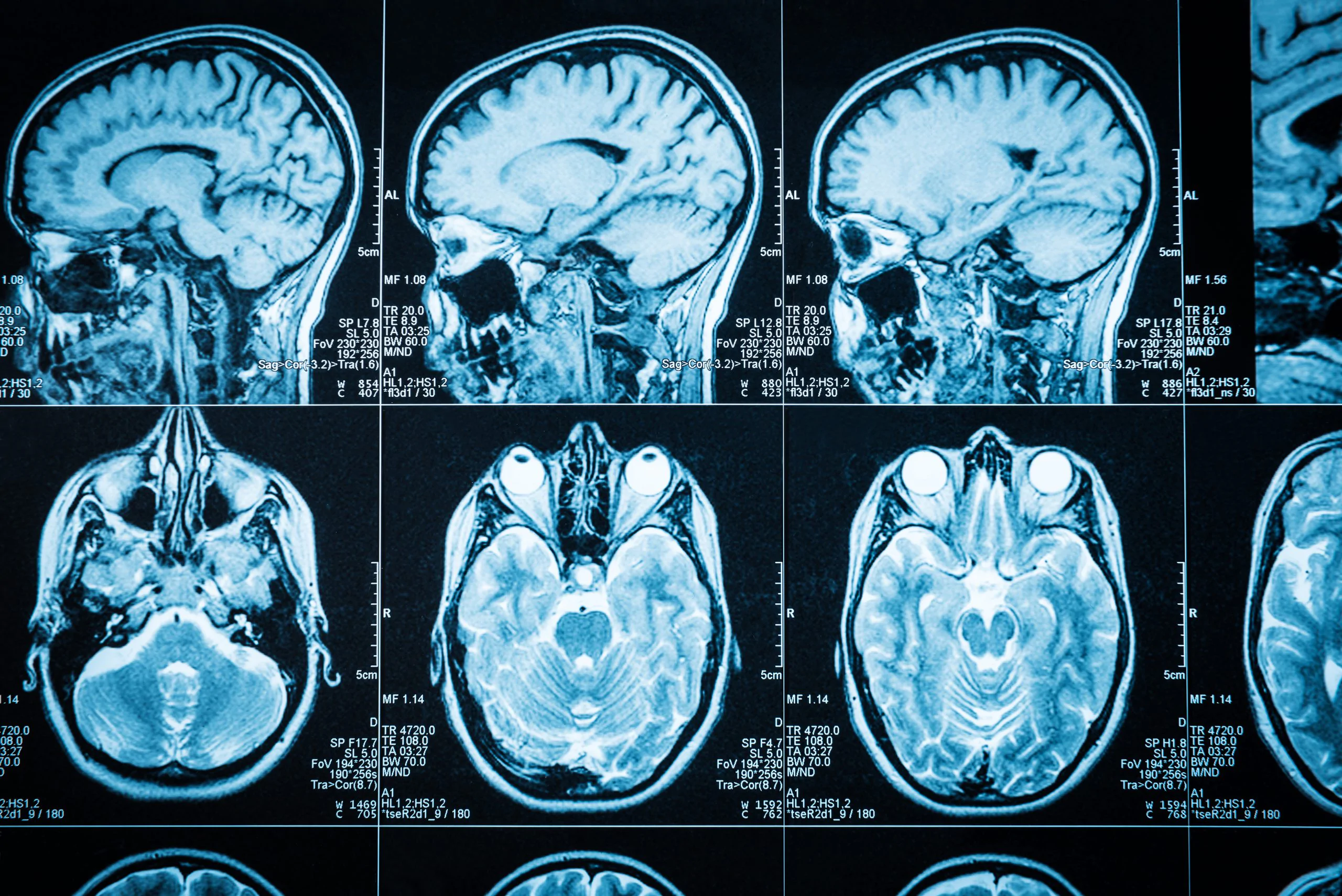Traumatic brain injuries (TBIs) affect 2.87 million people in the country every year. Friends and loved ones of survivors often face additional obstacles either caring for their loved one or managing the financial cost of daily care and medical treatment. With TBIs being a contributing factor to a third of all injury-related deaths in the United States, it’s important to understand and recognize all the different forms of brain trauma.
What is a Traumatic Brain Injury (TBI)?
The Center for Disease Control and Prevention (CDC) defines a TBI as a “bump, blow or jolt to the head or a penetrating head injury that disrupts the normal function of the brain.” The CDC recognizes that the severity of a TBI may range from “mild” (briefly affecting mental status or consciousness) to “severe” (an extended period of unconsciousness or amnesia).
NYS TBI Statistics
Despite the fact that many TBIs and their complications initially go undetected, CDC data suggests that they represent a significant public health issue in the United States. Each year, an average of:
- 52,000 people die annually from a TBI
- 275,000 people are hospitalized, and
- 1,365,000 (80%) of head trauma victims are treated and released from an emergency room visit
Closed vs. Penetrative Brain Injuries
Survivors of traumatic brain injuries may endure lifelong physical, psychological, and social challenges after their accidents. Others may only face effects that last a few days. Doctors typically group TBIs into two main categories: closed injuries and penetrative (open) injuries.
- Closed Injuries: TBIs with injury solely to the brain that do not fracture the skull
- Penetrative Injuries: TBIs that occur when skull bone breaks, leaving the brain exposed
The severity of a TBI depends on details including the location and type of trauma sustained. Not every strike or impact will result in a TBI, and not all types of brain damage lead to coma or death. Within these two categories there are various types of traumatic brain injuries that can occur.
Types of Traumatic Brain Injuries
Traumatic brain injuries can have wide-ranging physical and psychological effects. Some indicators or symptoms may appear immediately after the traumatic event, while others may take days or years to surface. Since the inner workings of the brain are not visible, it is essential to receive attention from a doctor or hospital visit for diagnosis and treatment. The main types of traumatic brain injuries include:
Concussion/Mild Traumatic Brain Injuries
Also called a concussion, a mild traumatic brain injury can be classified as mild if a loss of consciousness and/or state of disorientation is shorter than 30 minutes. Mild TBIs usually show normal CAT scans and MRI results, but the individual may have cognitive problems such as headaches, difficulty thinking, and mood swings. These injuries are frequently overlooked, but even “mild” TBIs can have a devastating effect on the victim and his/her family.
Concussions are the most common type of TBI. They occur when the head is struck by or against a strong force, causing damage as the brain is forced to slide and collide with the inside of the skull. These injuries affect brain function and could lead to bleeding in or around the brain either immediately or later. Such bleeding in the brain is often fatal, which is why anyone who experiences a brain injury needs to be monitored for worsening symptoms.
Concussion Risk Factors, Symptoms and Lasting Effects
Activities and factors that may increase the risk of a concussion or mild TBI include:
- Falling
- Participating in a high-risk contact sport (such as football, hockey, or rugby) without property safety equipment and supervision
- Motor vehicle collision involvement
- Being a victim in a pedestrian or bicycle accident
- Being a victim of physical abuse
- Having a previous concussion
Common Concussion/Mild TBI Symptoms:
- Headaches
- Fatigue
- Memory loss
- Poor concentration
- Sleep disturbances
- Dizziness/loss of balance
- Irritability/emotional disturbances
- Seizures
- Nausea
- Sensory issues such as sensitivity to light and sounds, blurred vision, ringing in the ears, a bad taste in the mouth or changes in ability to smell
In the past, doctors considered concussions to be minor inconveniences, but it is now known that they can cause lifelong damage. Most concussions resolve themselves within a few days, but some people (20%) may have what is called post-concussion syndrome when symptoms persist beyond three months.
Second impact syndrome occurs when someone experiences a second concussion before the signs and symptoms of the first one resolve. Though rare, this may result in rapid and usually fatal brain swelling.
Concussion Settlement Values
These cases are intended to provide general figures for informational purposes and are not meant to guarantee the value of any case.
Concussion settlement values can vary significantly, just as the injuries themselves. Settlement values vary on the degree of impairment and complications related to the injury. This means a settlement from a concussion that involves temporary short-term memory loss will generally value less than one that causes the cumulative effects of multiple brain injuries sustained in the crash.
A settlement is a sum agreed upon via negotiation out of court, whereas a verdict is an amount awarded by a jury in a lawsuit that goes to trial. Jury Verdict research reports the average compensation for all concussion cases in the US is $33,423. However, severe cases can reach well over that amount. Looking at examples of real New York concussion compensation amounts shows how the awards reflect the amount of injury the victim incurred:
- $225,000 to a woman who claimed frequent headaches and radiating pain after a car collision. The defense argued that she only sustained minimal impact damage from the accident. However, it was proven in court that she had no prior symptoms, and the history of headaches and pain began after the accident.
- $1,000,000 to a man who sustained a concussion after a rear-end accident. The head trauma causes vertigo, headaches, hearing loss and permanent ringing of the ears. He must take medication to manage the pain and symptoms.
Moderate to Severe Traumatic Brain Injuries
Signs of moderate to severe traumatic brain injuries can include any of the signs and symptoms of mild injury, as well as these other symptoms that may appear within the first hours to a day after a head injury:
- Loss of consciousness from several minutes to hours
- Dilation of one or both pupils of the eyes
- Clear fluids draining from the ears or nose
- Inability to awaken from sleep
- Weakness or numbness in toes and fingers
- Profound confusion
- Slurred speech
Infants and young children with brain injuries are unable to communicate sensory problems, confusion, headaches, and similar symptoms. A child with a TBI may display symptoms such as:
- Change in nursing or eating habits
- Emotional changes: unusual irritability, sad or depressed mood, persistent crying, and inability to be consoled
- Drowsiness or any change in sleep habits
- Change in ability to pay attention
- Loss of interest in favored toys and activities
Brain Contusions
A brain contusion is a specific type of TBI that occurs when an outside force (commonly from car accidents) directly impacts the head and damages brain tissue. Contusions can also sometimes occur when the brain bleeds and forms a bruise. Contusion injuries can lead to brain herniation (when a part of the brain squeezes past the skull), or intracranial pressure¸ which if left untreated can lead to death.
Some contusions heal without medical attention, but severe swelling and pressure requires treatment. Doctors sometimes try to eliminate brain swelling by reducing blood pressure and increasing carbon dioxide in the blood. If serious enough, surgery might be necessary to relieve the intracranial pressure. At the very least, a contusion requires close monitoring to prevent the swelling from causing permanent damage.
Contusions have similar symptoms as concussions and also vary in severity. However, contusions come with a greater long-term risk factor that is often reflected in settlements. One example is of a minor who was riding in the backseat of a vehicle when a car veered into their lane due to distracted driving. The minor claimed a mild contusion and symptoms including headaches, dizziness, loss of appetite and loss of concentration. She was awarded an $85,000 settlement.
Coup-Contrecoup Injuries
Coup-contrecoup brain injuries occur when an object impacts the brain and affects the site of the injury and the opposing side of the brain. Also common in car accidents, these injuries involve the exterior of the skull striking another object. Then, the force of the blow causes the brain to collide with the interior of the skull, possibly resulting in two brain injuries.
The most common causes of these injuries are falls, blunt force trauma, motor vehicle accidents and sports injuries. They usually damage the frontal, occipital and/or parietal lobes of the brain. Damage to these parts of the brain can result the following effects:
- Frontal Lobe: Issues with higher cognitive skills such as attention, planning, memory, behavior and problem-solving
- Occipital Lobe: Issues with visual function or perception; different types of blindness or visual distortions
- Parietal Lobe: Issues with processing sensory information; numbness, burning, loss of direction; left side neglect
The results of an MRI determine treatment for a coup-contrecoup injury. With mild bruising, a patient is asked to rest for a few days and will recover. However, for more severe injuries, surgery, or extensive therapy (physical, occupational, speech, cognitive training) to heal neuroplasticity and regain function will be necessary.
In one case, a child was swinging on a playground when the swing set broke, forcing her to fall a considerable distance and hit her head on the ground. She suffered a coup-contrecoup and was unconscious for several seconds. MRI results showed a mild TBI but did not reveal the full scope of her damages: the accident had caused further long-term damage that would disrupt her everyday life. In this case, the victim’s lawyers were able to negotiate a $3.75 million settlement.
Diffuse Axonal Injury (DAI)
This is a common brain injury in car accidents and one of the most severe types of brain injury. Negligent acts that can cause this injury are usually motor vehicle accidents, falling on slippery surfaces or engaging in sports after a concussion without proper recovery. The cause is from violent forces on the brain and head, forcing brain tissue to slide back and forth until the connecting fibers (axons) tear. This disrupts the messages that neurons send, resulting in loss of function.
These injuries can be hard to detect on an MRI because most DAI result in only microscopic tears. The severity depends on how large the tears are and where they are located. The more axons that tear, the more serious the effects will be.
In a recent settlement, a victim was hit head-on in an accident where another vehicle crossed over into oncoming traffic. The victim claimed permanent suffering, cognitive deficits and a personality change because of a diffuse axonal injury. The case settled for $2,075,000 on behalf of the victim.
Intracranial Hematoma and Hemorrhage
An intracranial hematoma is a serious, potentially fatal injury. A hematoma is a collection of blood caused by a break in blood vessel walls. A hemorrhage is defined as the leaking of blood from the vessel wall.
A sudden blow to the head can cause the brain to slide against the skull and bruise. The rupture of blood vessels between the skull and brain is known as an intracranial hematoma. CT scans usually detect these, but bleeding may not occur immediately.
Again, motor vehicle accidents are a primary cause of brain injuries such as hematomas. They can be caused by any blunt trauma such as in construction accidents or staircase falls. Victims require immediate emergency medical treatment, sometimes with surgery to remove the blood and reduce swelling. Even with surgery, victims of hematoma may suffer permanent brain damage or death.
Lifetime medical treatment and care expenses for a brain injury such a hemorrhage or intracranial hematoma is estimated to cost between $600,000 to $1.9 million. One victim suffered from an intracranial hemorrhage when she fell from an amusement park ride. She initially felt nauseous, dizzy, and vomited. After diagnosis from an emergency craniotomy, she continued to suffer from long term effects including a seizure disorder and left side neglect. Her legal team was able to prove negligence on the amusement park and achieve a settlement of $9.9 million.
Vegetative State or Brain Death
Moderate to severe traumatic brain injury can result in prolonged or permanent changes in a person’s state of consciousness and responsiveness. Different states of consciousness include:
- Coma: a person in a coma is unconscious of anything and unable to respond to stimulus. This results from widespread damage to every part of the brain. Patients may emerge from a coma after a few days to a few weeks or enter a vegetative state.
- Vegetative state: widespread damage to the brain can result in a vegetative state. The person is unaware of their surroundings but may open his or her eyes, make sounds, respond to reflexes or more. Sometimes vegetative states become permanent.
- Brain death: when there is no measurable activity in the brain. In a person who has been declared brain dead, technology is depended on to keep the body alive. Brain death is considered irreversible.
Some accidents that can lead to brain death and legal claims include:
- Motor vehicle accidents
- Falls
- Falling objects or other premise hazards
- Dangerous products
- Drowning accidents
- Sports injuries
- Violent assaults
It’s important for brain death diagnosis to be accurate, especially if the brain injury was from an incident caused by a negligent or intentional act of another person. If the victim is declared to be brain dead, the legal action would be a wrongful death claim. If a person is unconscious but not actually dead, a substantial legal claim could be made to cover medical care for the rest of their lives.
One case settled for $1.25 million when a tractor trailer hit a car after failing to yield. The victim was in a comatose state for several days while having also suffered a rib and shoulder fracture. Her legal team was able to prove that she had long term side effects from the accident.
Leading Causes and Risk Factors of TBIs
- Falls are the leading cause of TBI-related emergency room (ER) visits, accounting for nearly half (48%) of all ER visits
- Falls disproportionately affect children and older adults:
- Almost half of TBI-related ER visits among children 0-17 years are caused by falls
- 80% of TBI-related ER visits were caused by falls
- Being struck by or against an object is the second leading cause of all TBI-related ER visits, accounting for 17%
- 1 in 4 TBI-related ER visits by children less than 17 years old were caused by being struck by or against an object
- Falls (52%) and motor vehicle crashes (20%) are the first and second leading cause of all extensive TBI-related hospitalizations (including non-ER visits)
Experts frequently refer to TBI as the “silent epidemic” in the United States because the complications resulting from such injuries are often not readily apparent.
Measuring the Severity of a TBI
Doctors typically classify TBIs based on the severity of the injury using a tool called the Glasgow Coma Scale (GCS). The GCS has a point system that measures various functions such as eye-opening and verbal responses. A higher number scored indicates a higher level of function, meaning the injury is less severe. The scale consists of 15 points. The four possible severity levels are:
- Mild TBI: 13-15 points
- Moderate: 9-12 points
- Severe: 4-8 points
- Persistent Vegetative State: 3 points or fewer
The more severe the brain injury, the longer the time it takes to recover. Even in severe cases, recovery is almost always a possibility. Other than the above categories, there are other criteria that medical professionals use to diagnose brain injuries.
Traumatic Brain Injury Lawsuits
New York State imposes strict time limitations on filing a personal injury claim for a TBI. The period is three years from the date of the injury to take legal action. Three years may sound substantial, but it is important to speak with an attorney as soon as possible following the accident. A qualified legal team will prioritize the rights of the victim and win maximum compensation for their damages.
After any accident, make sure to follow instructions and medical recommendations provided by a doctor. Failing to follow the doctor’s orders could significantly reduce compensation due to neglecting to properly care for injuries as instructed.
Contact a Traumatic Brain Injury Lawyer in New York
The terms “mild,” “moderate” and “severe” are used to describe effects on brain function. A mild injury is still a serious injury that requires prompt attention and an accurate diagnosis. If you or a loved one is suffering from a traumatic brain injury, call the personal injury lawyers at Sobo & Sobo for a free consultation. Our TBI attorneys have over 50 years of experience defending head injury victims across the Hudson Valley and NYC.
Call 855-GOT-SOBO, contact them online, or visit one of our office locations today.




